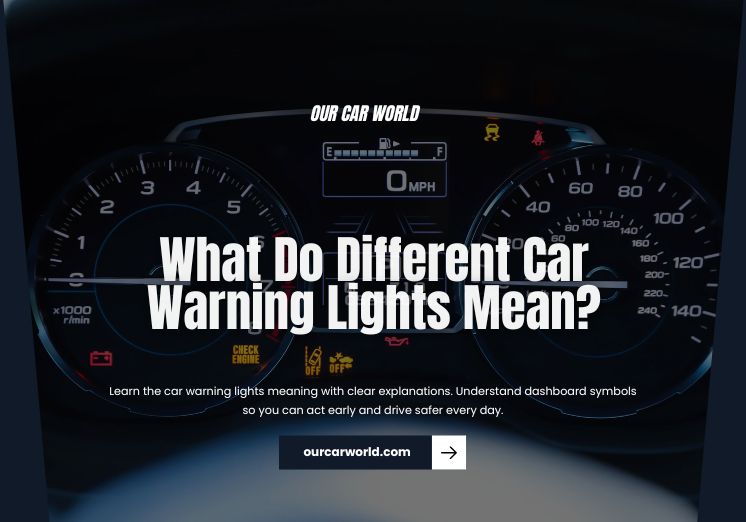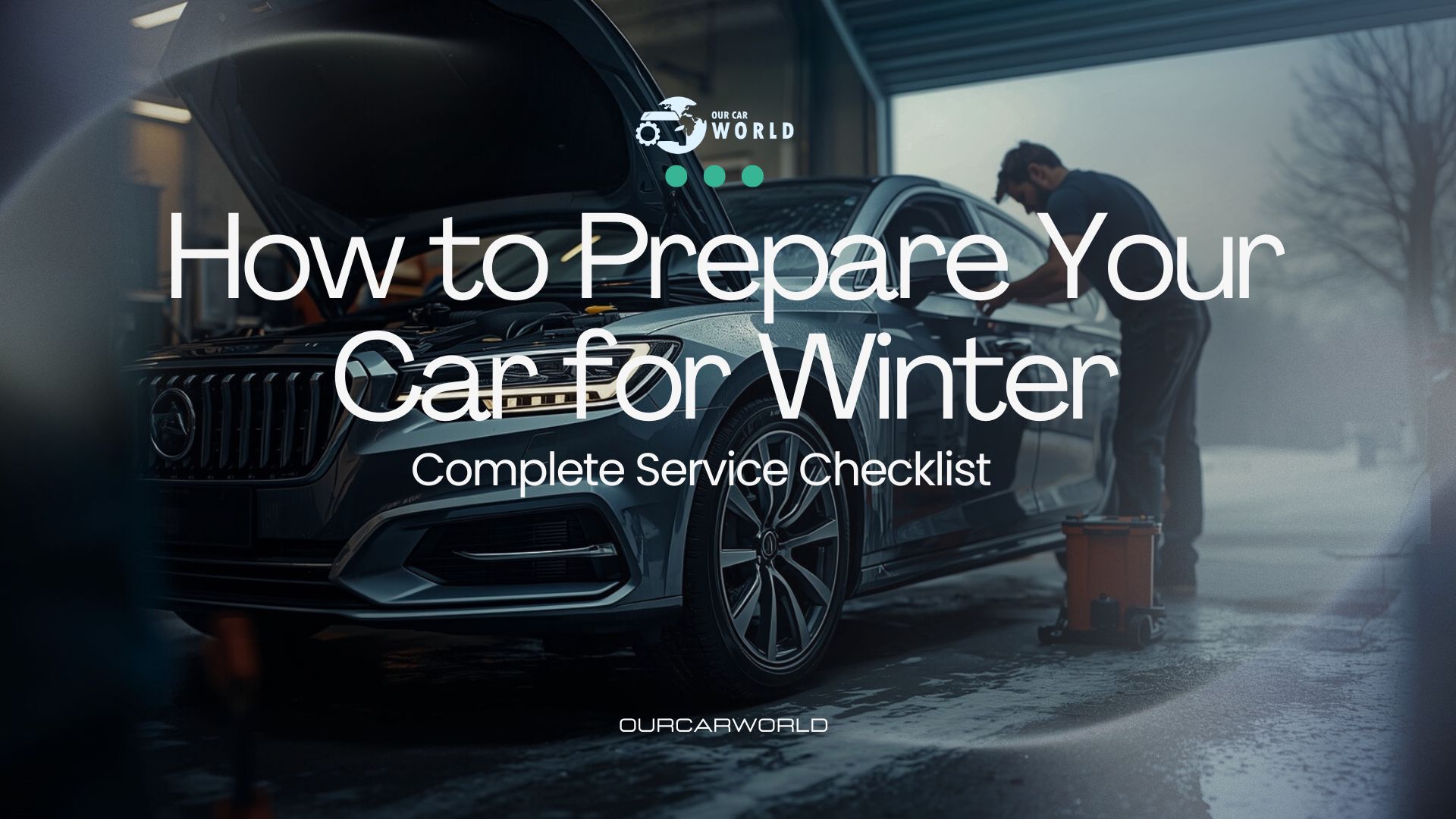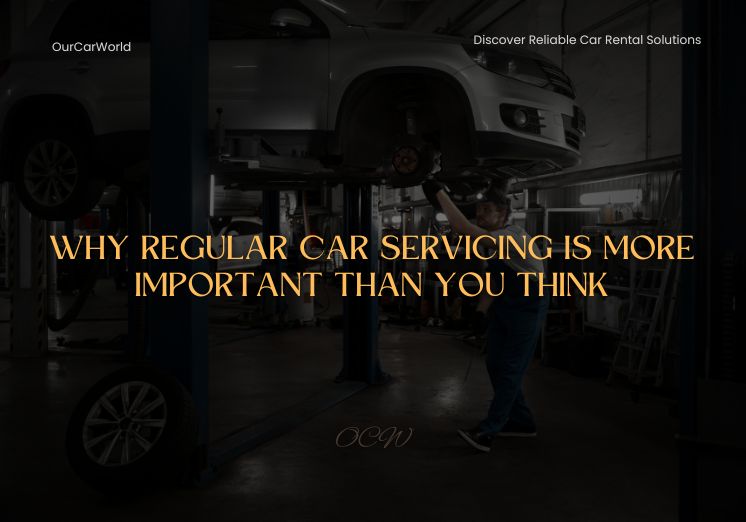Car warning lights are dashboard symbols that signal your vehicle’s condition. They indicate issues ranging from routine reminders – like low fuel – to urgent problems such as brake or engine failure. Understanding these symbols ensures your safety and prevents costly breakdowns.
Why You Should Know Your Car’s Dashboard Lights
Your dashboard is like a real-time communication tool between your car and you. When something’s wrong, your car speaks through symbols – not words.
Modern vehicles come with an onboard diagnostics system (OBD-II) that monitors the engine, transmission, brakes, and other components. If something isn’t working as it should, a warning light appears.
Ignoring a warning light can lead to:
- Costly repairs later
- Unsafe driving conditions
- Sudden vehicle breakdown
Knowing what these symbols mean is the first step in responsible car ownership.
Types of Car Warning Lights
Car warning lights generally fall into three categories:
- Red Lights – Urgent alerts that need immediate attention
- Yellow/Amber Lights – Advisory alerts; check the issue soon
- Green/Blue Lights – Informational alerts or system status (e.g., headlights on)
Common Car Dashboard Warning Lights and Their Meanings
Here is a visual-style table (formatted in plain text for clarity) that lists common dashboard lights, what they mean, and what you should do:
| Warning Light Icon | Name of Warning Light | What It Means | Recommended Action |
| Check Engine | Check Engine Light | Issue with engine/emission system | Visit a workshop as soon as possible |
| Oil Can | Oil Pressure Warning | Oil level/pressure is low | Stop car immediately and check oil level |
| Battery | Battery Alert | Battery not charging properly | Get battery and alternator checked |
| Thermometer | Engine Temperature Warning | Engine is overheating | Pull over and allow engine to cool down |
| Circle + ! | Brake System Warning | Brake failure or low brake fluid | Do not drive; contact a mechanic |
| Lightbulb | Light Malfunction | Exterior light not functioning properly | Replace bulb as needed |
| Fuel Pump | Low Fuel | Running low on fuel | Refuel at nearest station |
| Flat Tire Icon | Tire Pressure Alert | Low pressure detected in one or more tires | Check tire pressure and refill if needed |
| P with Circle | Parking Brake Warning | Parking brake engaged or malfunction | Disengage or check brake system |
| Skidding Car | Traction Control System | Slippery road or TCS issue | Drive carefully or check system settings |
High-Priority Warning Lights You Should Never Ignore
1. Check Engine Light
This is one of the most misunderstood yet most important symbols.
- What it means: Issues may range from a loose fuel cap to a failing catalytic converter
- If flashing: Indicates a severe problem (like engine misfire)
- Action: Visit a workshop immediately for diagnostics
2. Oil Pressure Warning Light
- What it means: Low engine oil or oil pump malfunction
- Why it matters: Running your car without oil can destroy the engine
- Action: Stop the vehicle and check oil levels. Add oil if low, or call for service
3. Brake System Warning
- What it means: Brake fluid may be low, or the braking system has failed
- If driving feels unusual: Do not continue driving
- Action: Have your brakes inspected right away
Frequently Asked Questions
What does it mean if a warning light is flashing?
- A flashing light – especially the Check Engine Light—often indicates a critical issue.
- Stop the car and seek immediate mechanical help.
Can I ignore a yellow or amber warning light?
- Yellow lights usually indicate caution but shouldn’t be ignored.
- Plan to get your vehicle checked soon.
What if multiple lights turn on at once?
- If you see several lights at once, it could be an electrical issue or complete system failure.
- Safest option: Pull over and call for roadside assistance.
When to Visit a Workshop
If you’re unsure about the meaning of a warning light—or your car is showing multiple or red indicators—don’t delay. Visit a trusted car repair workshop or use your car’s service manual for initial guidance.
💡 Tip: You can also use our platform to find verified workshops near you and book car services online.
Internal Link Opportunity
Want to know when your car needs immediate attention beyond warning lights?
➡️ Read our full blog: 5 Signs Your Car Needs Immediate Attention
This guide breaks down other symptoms you should never ignore, such as unusual noises, smells, or performance issues.
Final Thoughts
Dashboard warning lights are your car’s way of asking for help. The faster you respond to these signals, the safer and more reliable your driving experience will be.
Never drive with a red light on unless you’re heading directly to a workshop. If unsure, stop and call a professional.




